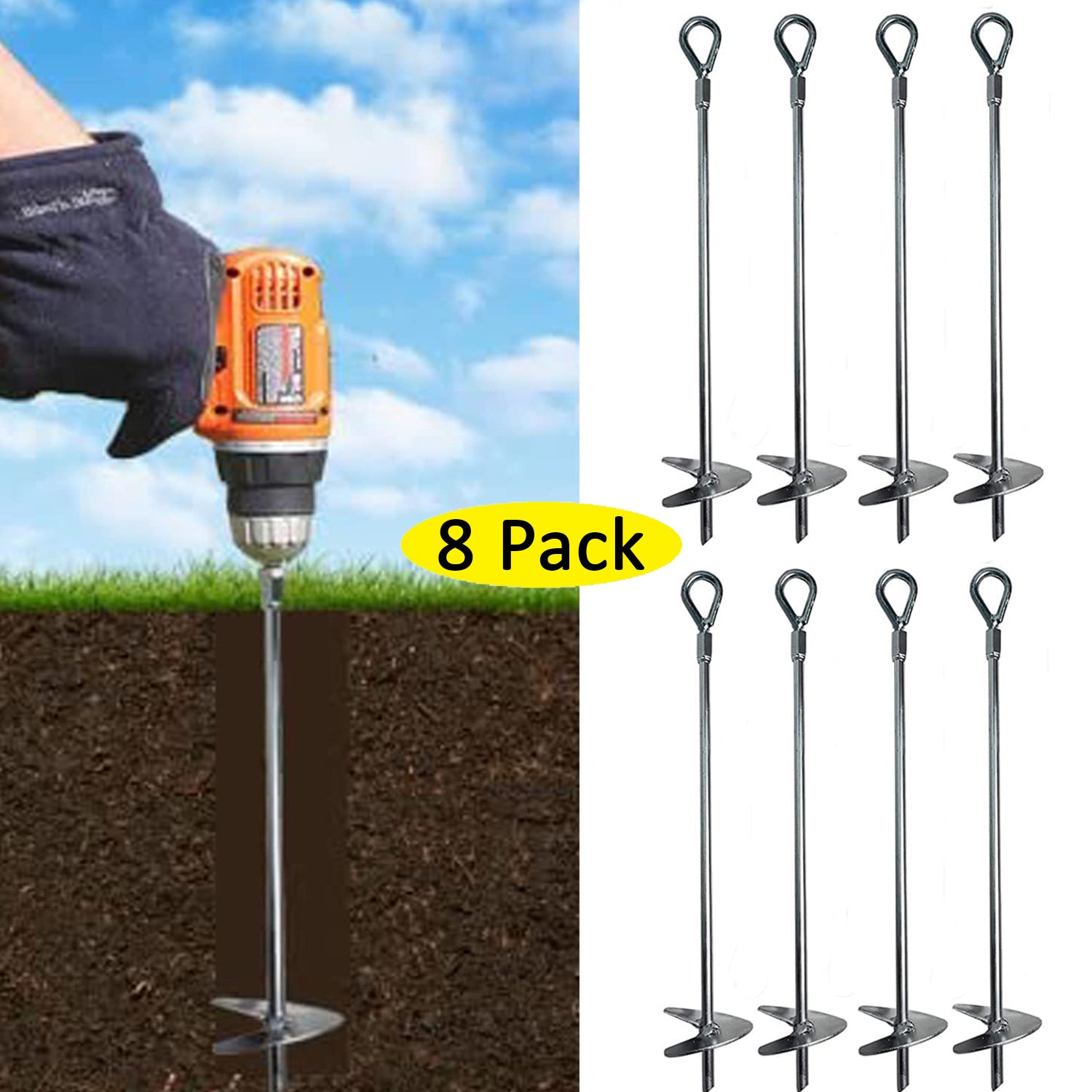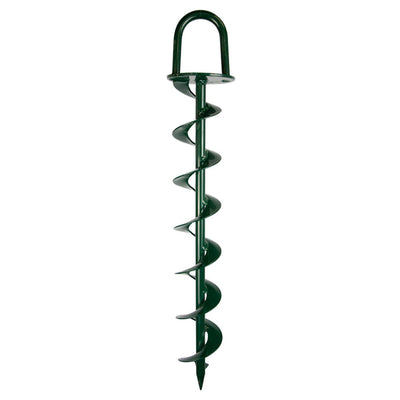Industry Professionals Offer Tips on the Best Ground Anchor Solutions
Industry Professionals Offer Tips on the Best Ground Anchor Solutions
Blog Article
Discover the Various Kinds Of Ground Anchor for Your Following Job
From auger anchors, which succeed in varied dirt problems, to risk supports created for short-lived setups, the options are countless. Additionally, concrete and screw anchors existing one-of-a-kind benefits in certain situations, while deadman supports are tailored for applications calling for resistance to side pressures.

Auger Anchors
Auger anchors are a prominent choice in different building and landscaping projects due to their one-of-a-kind style and efficient anchoring capacities. These anchors contain a helical screw-like shaft that is driven into the ground, permitting a steady and safe and secure hold. The spiral layout facilitates easy setup and maximizes resistance against side forces, making auger anchors specifically effective in applications such as secure fencing, momentary frameworks, and disintegration control.
The installation procedure of auger anchors is reasonably straightforward. Auger supports can be quickly removed and reused, which includes to their cost-effectiveness and sustainability.
Among the considerable benefits of auger anchors is their capacity to disperse lots uniformly across the surrounding dirt, lowering the danger of soil disturbance and minimizing environmental influence. In addition, they are much less at risk to heaving or loosening in time compared to standard anchoring techniques. As a result, auger anchors are an exceptional choice for tasks needing resilient and trusted anchoring services.

Stake Anchors
When it pertains to securing structures in a variety of outdoor applications, risk supports offer a trusted and uncomplicated remedy. These supports are typically built from sturdy products such as steel or light weight aluminum, created to stand up to environmental stresses while providing optimal security. Their straightforward style permits quick setup, making them an optimal selection for long-term or temporary anchoring needs.
Stake supports are particularly useful in protecting tents, canopies, and various other light-weight structures versus wind and climate. They function by being driven into the ground at an angle, producing a strong hold that resists pull-out forces - Ground Anchor. The performance of risk anchors depends upon numerous aspects, consisting of soil type, moisture web content, and the angle of installment
For added safety, numerous risk anchors come with attachment points for bands or ropes, allowing for stress modifications as essential. In applications such as landscape design or construction, they can successfully support devices or frameworks on irregular terrain. In general, risk supports provide a versatile and economical solution for safeguarding different outdoor setups, making them a recommended option for contractors and do it yourself fanatics alike.
Concrete Anchors
Concrete supports provide a robust solution for securing structures to concrete surfaces, guaranteeing stability and safety in numerous applications. These anchors are crucial for projects ranging from domestic constructions to large commercial setups. They come in different kinds, consisting of growth supports, glue anchors, and undercut anchors, each developed for particular load demands and ecological problems.
Sticky anchors utilize high-strength epoxy or material to have a peek at these guys bond the support to the concrete, using exceptional load-bearing capabilities, particularly in split concrete scenarios. Undercut supports produce an unique shape within the concrete, offering outstanding holding power, especially in applications where tensile tons are common.
Picking the suitable concrete anchor entails considering variables such as the weight of the tons, the problem of the concrete, and ecological conditions. Appropriate installment methods are crucial to ensure optimum efficiency and dependability. When executed properly, concrete anchors significantly improve the structural stability of numerous projects, making them vital in contemporary building practices. Recognizing the certain requirements of your task will aid in selecting the best sort of concrete anchor for the task.
Screw Anchors

Screw anchors are a flexible securing option that can be properly employed in a range of applications where traditional concrete supports might not suffice. These supports include a helical style that allows them to be conveniently driven right into the ground, making them optimal for usage in soil and other substrates. Their distinct structure provides exceptional holding power and resistance to pull-out pressures, making them suitable for many projects, from landscape design to structural assistance.
One of the key advantages of screw anchors is their ease of installation. They call for minimal tools and can usually be mounted without the need for excavation, which conserves both time and labor expenses. Additionally, screw supports can be gotten rid of and recycled, offering a lasting service for short-term applications.
Screw anchors are specifically helpful in areas where soil conditions are challenging, such as loosened or sandy soils. Their capacity to be installed at varying depths enables customization based on details project demands. Overall, screw anchors offer a trusted and reliable securing method, making them an exceptional option for professionals and engineers looking for effective services for their jobs.
Deadman Anchors
Deadman supports serve as a durable solution for maintaining frameworks in tough problems, especially where conventional anchoring methods might fail. These anchors contain big, heavy things hidden underground, which develop resistance against side forces. The style typically involves a straight component, such as a next block of concrete or a steel plate, buried in the dirt, to which bands or cords are affixed.
The effectiveness of deadman supports hinges on their capacity to distribute lots over a bigger location, minimizing the risk of failing in unsteady dirt problems. They are particularly beneficial in applications such as retaining walls, short-lived frameworks, and slope stablizing, where dirt motion can compromise the stability of the structure.
Setup of deadman anchors requires cautious preparation to guarantee they are placed at the proper depth and alignment, optimizing their load-bearing capability. While they may require even more labor and material than light-weight supports, their dependability in unfavorable problems makes them vital for lasting projects. Deadman anchors are versatile and can be adapted to various applications, making them a go-to choice for engineers dealing with special difficulties in their projects.
Verdict
In summary, selecting the suitable kind of ground support is vital for guaranteeing security and safety in different tasks. Auger anchors master varied soil conditions, while stake anchors fit short-lived applications. For concrete surfaces, growth and sticky anchors supply reputable choices, and screw anchors offer versatility in challenging surfaces. Deadman anchors are especially reliable in withstanding lateral pressures for maintaining walls. Careful factor to consider of these alternatives will certainly improve project outcomes and structural honesty.
Furthermore, concrete and screw supports present special benefits in specific situations, while deadman supports are customized for applications needing resistance to side pressures - Ground Anchor.Auger anchors are a preferred option in numerous construction and landscape design jobs due to their special design and reliable securing capabilities. They come in various types, including growth anchors, adhesive anchors, and undercut supports, each created for details load needs and environmental problems
Adhesive anchors make use of high-strength epoxy or resin to bond the anchor to the concrete, offering remarkable load-bearing capacities, specifically in fractured concrete circumstances. Generally, screw anchors give a dependable and reliable anchoring method, making them an outstanding choice for designers and professionals seeking reliable services for their websites tasks.
Report this page